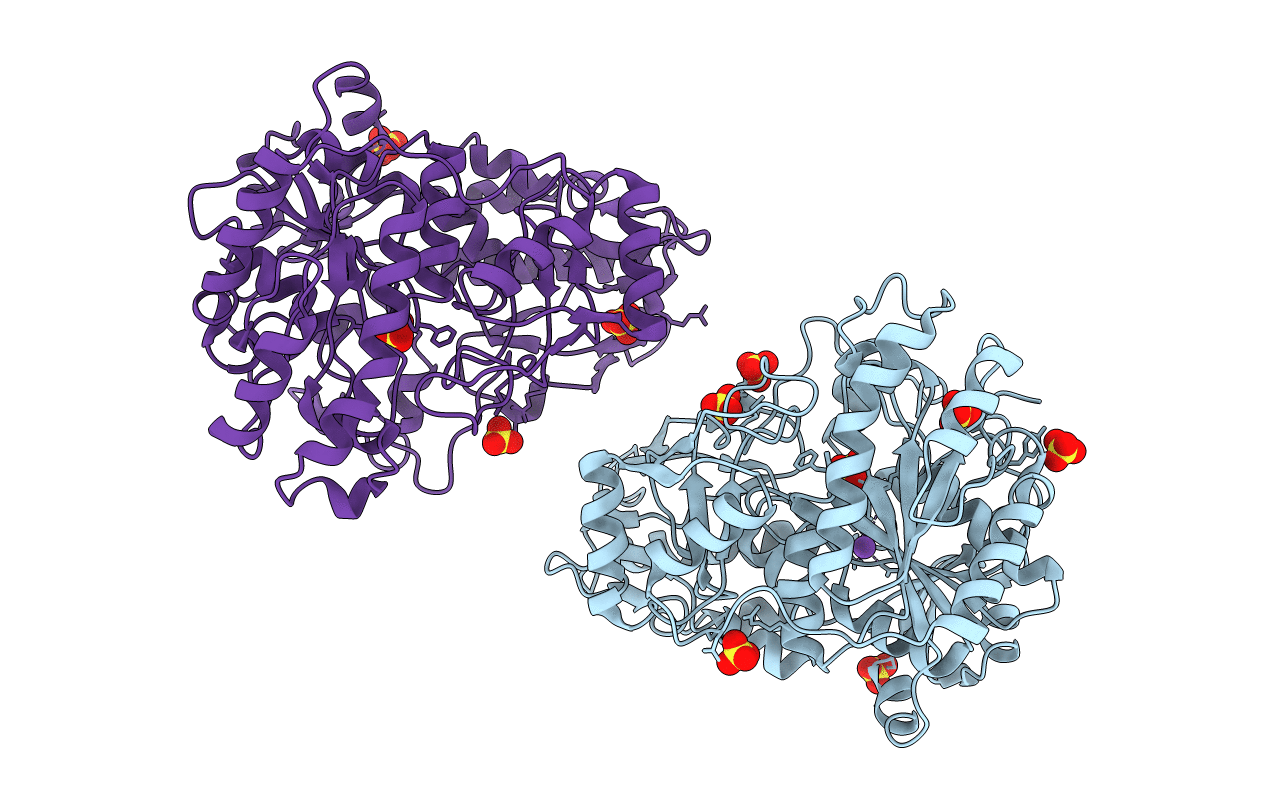
Deposition Date
2000-08-30
Release Date
2001-08-30
Last Version Date
2024-12-25
Entry Detail
PDB ID:
1FP7
Keywords:
Title:
MONOVALENT CATION BINDING SITES IN N10-FORMYLTETRAHYDROFOLATE SYNTHETASE FROM MOORELLA THERMOACETICA
Biological Source:
Source Organism:
Moorella thermoacetica (Taxon ID: 1525)
Host Organism:
Method Details:
Experimental Method:
Resolution:
3.20 Å
R-Value Free:
0.35
R-Value Work:
0.28
R-Value Observed:
0.28
Space Group:
H 3 2


